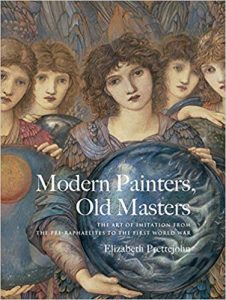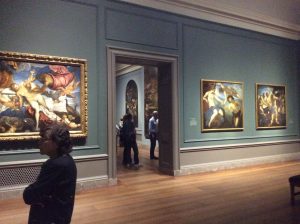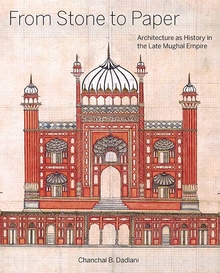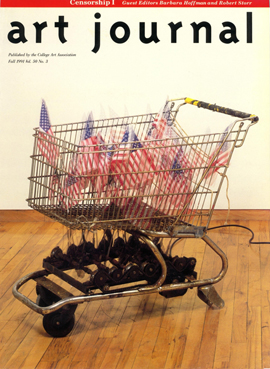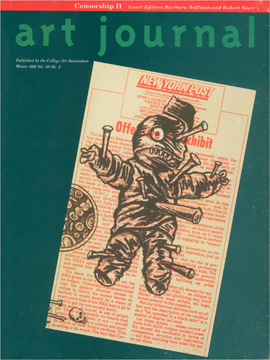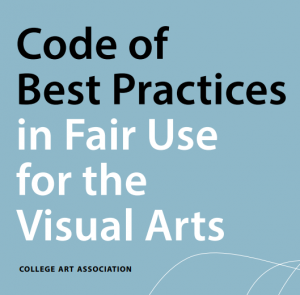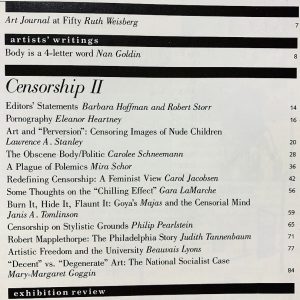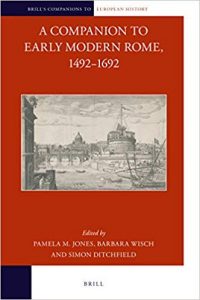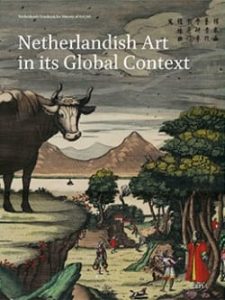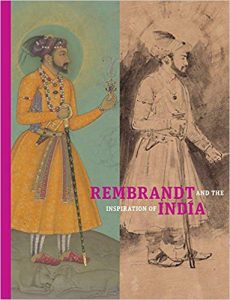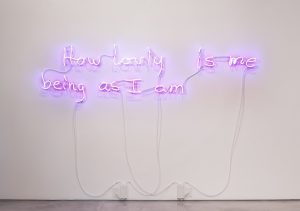CAA News Today
Apply to be a Mentor or Mentee at CAA 2020
posted Nov 25, 2019
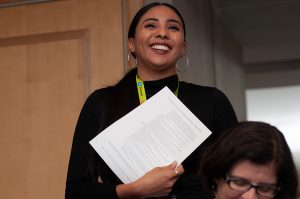
Attendee at the 2019 Annual Conference in New York. Photo: Ben Fractenberg
We invite you to participate in CAA’s mentorship program during the 108th Annual Conference, taking place February 12-15, 2020 in Chicago.
Mentoring appointments offer support for current CAA members at any stage of their career, regarding professional development and portfolio review. Applicants are paired in one-on-one meetings with an experienced professional from within the membership for individual twenty-minute consultations. Topics are open and may include: how to conduct a thorough job search; present cover letters, CVs, and digital images; and prepare for interviews. Whenever possible, CAA matches participants and mentors based on medium or discipline.
Conference registration, while encouraged, is not necessary to participate. Meetings are made by appointment only, in advance of the conference. Participants are chosen by a lottery and are notified of their scheduled date and time slot by email in early 2020. Limited slots may be available during the conference. Visit the CAA Information booth in Registration during the conference for more information.
As part of a pilot to expand CAA mentorship, CAA will support pairs that choose to continue their dialog for the following six months after meeting at the conference. Please consider if you might be able to commit to a minimum of three check-ins and to give feedback via online form at the end of September 2020.
To sign up for an appointment, complete this form:
To volunteer to mentor, please complete this form:
Kristen Lowe and Andrew Wykes
posted Nov 25, 2019
The weekly CAA Conversations Podcast continues the vibrant discussions initiated at our Annual Conference. Listen in each week as educators explore arts and pedagogy, tackling everything from the day-to-day grind to the big, universal questions of the field.
CAA podcasts are on iTunes. Click here to subscribe.
This week, Kristen Lowe and Andrew Wykes discuss living and making in desperate times.
Kristen Lowe is a studio artist, filmmaker, and professor of art and art history at Gustavus Adolphus College. Her studio is located southwest of Minneapolis, Minnesota.
Professor Andrew Wykes teaches at Hamline University in Saint Paul, Minnesota. His teaching career spans 36 years. Andrew is a landscape painter who moved to the United States from the UK in 1995.
New in caa.reviews
posted Nov 22, 2019
Emma Merkling reviews Modern Painters, Old Masters: The Art of Imitation from the Pre-Raphaelites to the First World War by Elizabeth Prettejohn. Read the full review at caa.reviews.
Tracy E. Cooper writes about Tintoretto: Artist of Renaissance Venice, an exhibition that showed in Venice and Washington, DC. Read the full review at caa.reviews.
Laura E. Parodi discusses From Stone to Paper: Architecture as History in the Late Mughal Empire by Chanchal B. Dadlani. Read the full review at caa.reviews.
Member Spotlight: Barbara Hoffman
posted Nov 21, 2019
Up next in our Member Spotlight series, we are highlighting the work of Barbara Hoffman, founder and principal of The Hoffman Law Firm and a pioneer in the field of art law who served as CAA’s pro bono legal counsel for ten years. Joelle Te Paske, CAA’s media and content manager, spoke with Barbara over the phone to learn about her rich history with CAA. Read the interview, edited for length and clarity, below.
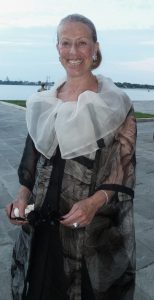
Image courtesy Barbara Hoffman.
Hi Barbara. I’m delighted to have the chance to speak with you. You are one of our esteemed lifetime members who has been a part of the organization in various capacities for more than 40 years. That’s incredible.
The pleasure is mine. I loved working with CAA during my tenure there.
Just looking over your bio on your website, I’m just amazed at how many different roles you’ve taken on over your career as an art lawyer. How did you first get involved with CAA?
I’ve always been interested in art, and I studied in Paris at the Académie Julian during my junior year when I majored in French and Art History. But I wasn’t very aware of the College Art Association.
After my studies, I was one of the early art lawyers. I had founded the Volunteer Lawyers for the Arts in the state of Washington, and continued to develop and write on the subject of art law, at a time when there were only a handful of people who were doing it.
Before then, I practiced civil rights law in New York. I’m from New York—I went to Columbia Law School—and was helping artists on the side when I was in my senior year. I volunteered as a lawyer for the first Volunteer Lawyers for the Arts in New York. I was then recruited to be a law professor in Seattle and I’d had so much fun with Volunteer Lawyers for the Arts that I thought I would join the Washington branch when I moved. When it didn’t exist, I ended up founding the statewide Washington Volunteer Lawyers for the Arts, and hosting an art law clinic at the law school.
Oh, interesting. So it started in New York and then you brought it over to the West Coast, in Washington.
Yes. Then eventually I moved back to New York and I joined the New York City Bar Art Law Committee. I was also Chair of the Public Art Subcommittee. We drafted a balanced, annotated model contract to be made available to artists and administrators. Percent for Art was just starting, and most artists and bureaucrats had little knowledge of copyright and other issues in public art.
The National Endowment for the Arts put together a task force of artists and administrators in which I was invited to participate, alongside Joyce Kozloff, who was on the CAA Board of Directors at the time. Susan Ball was executive director at the time. There was a feminist uprising, and my name was put forward to replace Gil Edelson.
I was CAA’s pro bono outside counsel and member of the executive committee for ten years. Among many activities, I wrote a column for CAA on legal issues. My fondest memories are those of working with the different CAA committees and their chairs. Particularly memorable was the work I did with Albert E. Elsen, a professor of art history and a great scholar on Rodin. We revised the guidelines for the code of ethics for art historians. And I worked with several well-known artists too, many of whom are no longer with us.
I also advised all the CAA publications. This was an interesting time for the issues of fair use and copyright in images. Through me, CAA got involved in what was called the Conference on Fair Use, taking place under the US Patent and Trademark Office and the US Copyright Office, which dealt with bringing copyright law into the digital world.
Before I came in to represent CAA, most of the people there were representing either libraries on one side, who were of course for fair use, or publishers, both trade book and academic publishers, who were of course for a stricter interpretation and enhanced copyright protection. But nobody was really talking about issues like images until we brought up to the subject.
On that issue I worked very hard, and CAA worked very hard. It was extremely controversial for the organization, because as you know, everybody at CAA wears multiple hats and the copyright issues involved both publishers and scholars. So I worked with the Copyright Committee and Fair Use and Christine L. Sundt, president of the Visual Resources Association and a member of CAA. She was a passionate devotee of legal issues there.
I imagine those are the fundamental building blocks for CAA’s Code of Best Practices in Fair Use that was published in 2015.
There are earlier versions of it, too. There was one during my tenure and then it evolved over time. We were never successful in terms of getting the government, the Conference on Fair Use, to be able to come together to develop official guidelines. I spent hours and hours and hours developing scenarios. We tried to get people’s agreement on the analysis and whether it was or wasn’t fair use. But at the end there was never a resolution of that and I think it continued on until 2015. It was a long-going effort. We were the first people to really address the whole issue in the late eighties, early nineties.
That’s fascinating. And especially now, with the emergence of the internet.
Another thing that we were really involved with during my tenure was the issue of freedom of expression. I represented CAA and was active in what we now call the Culture Wars, when Jesse Helms tried to ban the publication of [Robert] Mapplethorpe’s images. This was in 1989, and continued through the 1990s.
They were extremely active times. I’m most proud of the two-volume issue I did on censorship with Robert Storr for Art Journal. It was voted at the hundredth anniversary conference the best Art Journal that was published in the journal’s history.
To accompany this interview, we’ve brought the historic two-volume issue out from behind the paywall for readers to explore through the end of December 2019: Censorship I and Censorship II
For the double issue, I dedicated my statement to Justice Brennan of the Supreme Court. In my view, his decisions on the Supreme Court regarding the First Amendment and freedom of expression basically did more to provide contours of protection for artistic expression than any other Supreme Court Justice.
Then Rob Storr made his editor’s statement a full reprint of Mapplethorpe’s X Portfolio. He got permission from the Mapplethorpe Foundation because of his connections to publish them, but when we sent it to our normal printer, they were afraid to publish it because they thought they (or CAA) would be sued for pornography. They asked us to find a different printer. So we sent it around to all these places that might publish pornography. But the pornography magazines that we sent them to didn’t have the quality that we would require for the CAA journals! So we went to The Burlington Magazine and asked them if they would print it. It was much more expensive, but our usual printer paid the difference. So it was actually printed, by my recollection, by The Burlington Magazine.
There were two fall outs from the issue. The first fall out was a number of CAA members dropped their membership. Pretty amazing. They said the issue should have come with a warning label. You know, they got it in the mail, they left it on the table, and then their children saw it, with no warning.
Another spin off was because the CAA journal goes to every single university that’s a member for the library and art departments, the images that people had been talking about—but never saw—were suddenly available. As part of this I ended up participating in a panel at the University of Nashville, defending a professor who had brought that issue to his class of drawing and photography.
It was all a very meaningful experience. As a result, I was involved in authoring two friends of the court briefs, in the district court and the appellate court, on behalf of the College Art Association. Those were then quoted by the court defending Karen Finley and what they called the NEA Four [Karen Finley, Tim Miller, John Fleck, and Holly Hughes], who had their NEA grants declined because of the Helms amendment. So we introduced a friend of the court brief on behalf of College Art Association, and another one was on behalf of College Art Association and PEN America.
Later on, the organization’s centennial publication featured an image from Faith Ringgold’s French series that I licensed as her lawyer at the time. Faith was an active CAA member on the board and committee on diversity.
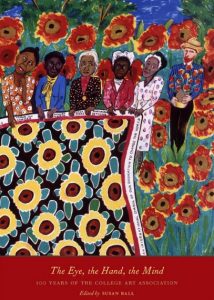
CAA’s centennial publication,The Eye, The Hand, the Mind: 100 Years of the College Art Association, with Faith Ringgold’s The Sunflower Quilting Bee at Arles (1996) on the cover.
The complexity of being an art lawyer—it brings you into so many different issues.
It was great. As I said, I worked with all the CAA Committees over that time. I still go to conferences from time to time and participate. And I just, you know, I’m happy to see so many artists that I’ve worked with being rewarded over time by the CAA. I’ve shown up for their presentations, the last ones being Howardena Pindell and Ursula von Rydingsvard for lifetime achievements.
Yes! Our 2019 honorees.
So I’m still keeping up and seeing how the organization has grown and changed. My legacy is these cases, my friends, and the guidelines. A wonderful opportunity for me to combine my passions—law and art history. As a member of the Executive Committee I attended all the CAA annual conferences, and when I wasn’t doing official business, I’d go to art history sessions. I have very happy memories of the wonderful people that I met there. I’m still in contact with many of them. That’s a part of my life that’s ongoing.
That’s wonderful.
And I’m still doing the same thing—still fighting for artists. Still fighting for the first amendment. Still doing public art. So, I feel very fortunate to be a life member.
Barbara Hoffman Biography
The Hoffman Law Firm continues as a preeminent global art and copyright boutique with a focus on Europe, Asia, Africa, and the United States. Author and editor of A Visual Artist’s Guide to Estate Planning (1996 and 2008), Barbara Hoffman also advises artists, galleries, and their estates on legacy planning, and endowed foundations.
Barbara has been recognized by her peers and clients with leadership posts and honor, including as Chair of the New York City Bar Association Committee on Art Law, Chair of the International Bar Association Committee on Art and Cultural Institutions and Heritage Law, and being selected to New York Super Lawyers, Best Lawyers in America, and Best Law Firms in art law and copyright law (2012-2020).
In addition to her service on the CAA executive committee, Barbara serves or has served on many boards, including ArtTable, Performa and the boards of several artists’ foundations. She was voted one of Art and Auction 51’s Power Women in the Art World 2016. www.hoffmanlaw.org
Meet the Meiss Fund Recipients for Fall 2019
posted Nov 21, 2019

Carvings at the Kailāsanātha Temple in Kāñcīpuram. Photo by mckaysavage, CC BY 2.0
MEET THE GRANTEES
Twice a year, CAA awards grants through the Millard Meiss Publication Fund to support book-length scholarly manuscripts in the history of art, visual studies, and related subjects that have been accepted by a publisher on their merits, but cannot be published in the most desirable form without a subsidy.
Thanks to the generous bequest of the late Prof. Millard Meiss, CAA began awarding these publishing grants in 1975.
The Millard Meiss Publication Fund grantees for Fall 2019 are:
- Anneka Lenssen, Beautiful Agitation: Modern Painting in Syria and the Arab East, University of California Press
- Padma Kaimal, A Balance of Opposites: Reading Material Form at the Kailāsanātha Temple in Kāñcīpuram, University of Washington Press
- Babette Bohn, Women Artists, Their Patrons, and Their Publics in Early Modern Bologna, Penn State University Press
- Elina Gertsman, Nothing is the Matter: Spaces of Absence in Late Medieval Art, Penn State University Press
- Lucy Donkin, Standing on Holy Ground in the Middle Ages, Cornell University Press
- Adrian Anagnost, Spatial Orders, Social Forms: Art and City Space in Modern Brazil, 1928-69, Yale University Press
Read a list of all recipients of the Millard Meiss Publication Fund from 1975 to the present. The list is alphabetized by author’s last name and includes book titles and publishers.
BACKGROUND
Books eligible for a Meiss grant must currently be under contract with a publisher and be on a subject in the arts or art history. The deadlines for the receipt of applications are March 15 and September 15 of each year. Please review the Application Guidelines and the Application Process, Schedule, and Checklist for complete instructions.
CONTACT
Questions? Please contact Cali Buckley, Grants and Special Programs Manager, at cbuckley@collegeart.org.
Call for Submissions: CAA 2020 MFA Screening
posted Nov 20, 2019
CAA’s Services to Artists Committee (SAC) invites MFA students to submit video work for consideration for the upcoming CAA 108th Annual Conference in Chicago in February 2020.
Selected works will be premiered during the conference in the Media Lounge on Wednesday, February 12, 12:15–1:45 PM, and screened during the conference at the ARTexchange exhibition, which will be presented at the Hokin Gallery at Columbia College (623 South Wabash), a half block north of the conference hotel.
Through this screening and exhibition initiative, SAC aims to welcome the next generation of artists and practitioners into our midst. Our annual MFA Screening celebrates the hard work of MFA students across the nation and world, while exposing their artworks to a broad audience. We look forward to reviewing your submissions.
Please use the form here or the button below to submit your entry (a maximum of three per participant).
Deadline: December 10, 2019
Submission for consideration is free, and membership with CAA is not required (we are collecting that information for statistical purposes).
Jurors: Joan Giroux, Richard Serrano, and Vagner Mendonça-Whitehead
Submissions should include the following:
- A short bio (50 words or less)
- A short artist statement (100 words or less)
- A link to 1–3 videos
- Personal website (optional)
Specifics for your submissions:
- 5 minutes in maximum length (excerpts accepted)
- mpeg 4
- 720p
- Slate/Title cards: 5 seconds, with your name, title of work, date of completion, name of school/program
- uploaded onto Vimeo.com (upload your link, allow it to be download-able)
Deadline: December 10, 2019
Acknowledgment: January 15, 2020
In collaboration with the Committee on Women in the Arts, CAA offers 50 percent of the 2020 conference’s content in celebration of the Centennial of Women’s Suffrage in the United States, while also acknowledging the discriminatory practices that limited voting rights for Indigenous women and women of color, even after the passage of the 19th amendment in 1920. The Services to Artists Committee encourages applicants to embrace the spirit of the 2020 conference by engaging issues of inclusivity and intersectional discourses in the arts.
About us: The Services to Artists Committee (SAC) was formed by the CAA Board of Directors to seek broader participation by artists and designers in the organization and the Annual Conference. SAC identifies and addresses concerns facing artists and designers; creates and implements programs and events at the conference and beyond; explores ways to encourage greater participation and leadership in CAA; and identifies ways to establish closer ties with other arts professionals and institutions. To this end, committee members are responsible for the programming of ARTspace and its related events.
News from the Art and Academic Worlds
posted Nov 20, 2019
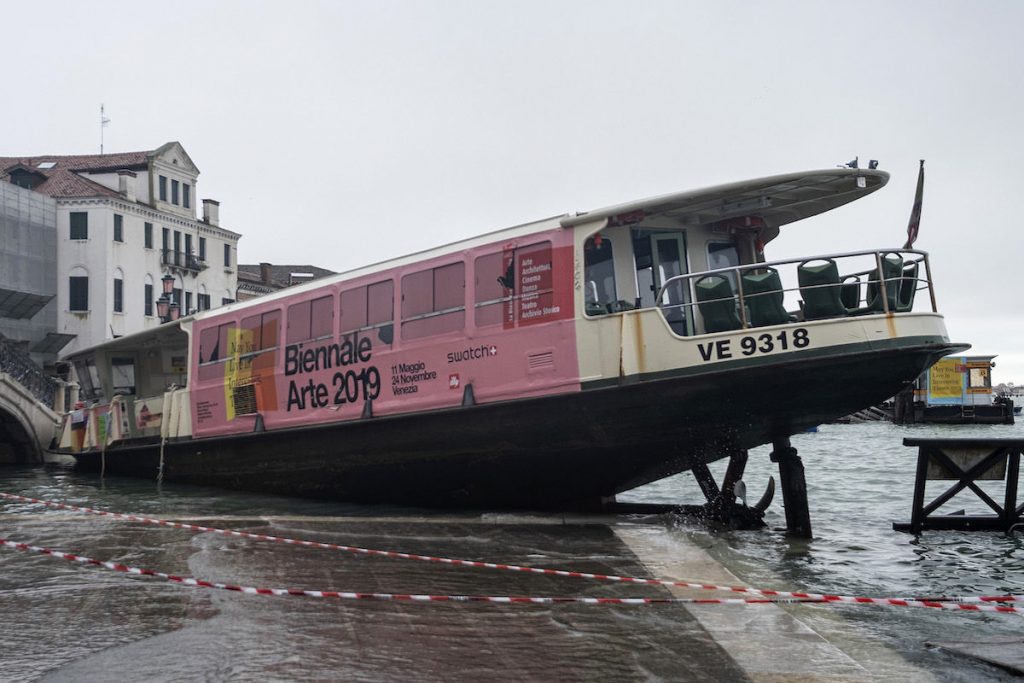
Flooding in Venice caused the mayor of the city to declare a state of emergency. Photo: Stefano Mazzola/Awakening/Getty Images, via Artsy
Venice’s Worst Floods in 50 Years Force Biennale to Close
The mayor has declared a state of emergency and said that the extreme flooding is due to climate change. (Artsy)
Interactive: Gendered Language in Teaching Evaluations
Developed by Ben Schmidt, clinical associate professor of history and director of digital humanities at New York University, this chart explores the words used to describe male and female teachers on Rate My Professors. (via Chronicle of Higher Ed)
Why Libraries Have a Public Spirit That Most Museums Lack
“A true public space is constantly negotiating knowledge or the lack of it, rather than presenting a position of expertise.” (Hyperallergic)
Baltimore Museum of Art Will Only Acquire Works from Women Next Year: ‘You Have to Do Something Radical’
Museum director Christopher Bedford announced last week that every artwork the BMA obtains for its permanent collection next year—whether through a purchase or donation—will have been created by a woman. (The Baltimore Sun)
Want articles like these in your inbox? Sign up:
Meet the 2019 Wyeth Award Winners
posted Nov 19, 2019
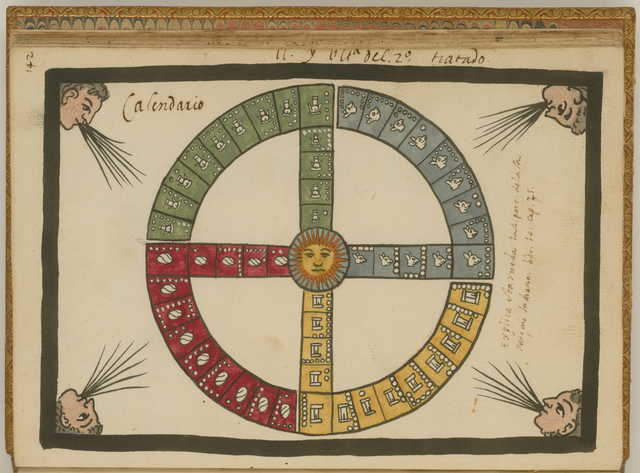
The Aztec Tonalpohualli Calendar, 1585, attributed to the 16th-century Mexican Jesuit Juan de Tovar. Image: Wikimedia Commons
Meet the Grantees
Since 2005, the Wyeth Foundation for American Art has supported the publication of books on American art through the Wyeth Foundation for American Art Publication Grant, administered by CAA. The 2019 grantees are:
- Lucy Bradnock, No More Masterpieces: Modern Art After Artaud, Yale University Press
- Elizabeth Ferrer, Critical Lens: A History of Latinx Photography, University of Washington Press
- Kimberly Beil, Good Pictures: A History of Popular Photography, Stanford University Press
- Elizabeth Boone, Descendants of Aztec Pictography: The Cultural Encyclopedias of Sixteenth Century Mexico, The University of Texas Press
Read a list of all recipients of the Wyeth Foundation for American Art Publication Grant from 2005 to the present.
BACKGROUND
For the Wyeth Foundation for American Art Publication Grant, “American art” is defined as art created in the United States, Canada, and Mexico. Eligible for the grant are book-length scholarly manuscripts in the history of American art, visual studies, and related subjects that have been accepted by a publisher on their merits but cannot be published in the most desirable form without a subsidy. The deadline for the receipt of applications is September 15 of each year.
Guidelines
Process, Materials, and Checklist
CONTACT
Questions? Please contact Cali Buckley, Grants and Special Programs Manager, at cbuckley@collegeart.org.
Kerry Hustwit and Megan Griffiths
posted Nov 18, 2019
The weekly CAA Conversations Podcast continues the vibrant discussions initiated at our Annual Conference. Listen in each week as educators explore arts and pedagogy, tackling everything from the day-to-day grind to the big, universal questions of the field.
CAA podcasts are on iTunes. Click here to subscribe.
This week, Kerry Hustwit and Megan Griffiths discuss “Educating the Future Filmmaker: Theory and Practice.”
Kerry Hustwit is a filmmaker and assistant professor of Communication and Digital Media at Neumann University.
Megan Griffiths is an award-winning writer/director working in film and television. She has directed shows for HBO, EPIX, TNT, and Netflix. Additionally, Megan has directed six feature films, among them Eden, which won the Emergent Narrative Director Award and the Audience Award for Narrative Feature at SXSW 2012.
New in caa.reviews
posted Nov 15, 2019
Kathleen Christian reviews the compilation A Companion to Early Modern Rome, 1492–1692, edited by Pamela M. Jones, Barbara Wisch, and Simon Ditchfield. Read the full review at caa.reviews.
Claudia Swan writes about Netherlandish Art in Its Global Context, edited by Thijs Weststeijn, Eric Jorink, and Frits Scholten, and the exhibition and catalog Rembrandt and the Inspiration of India. Read the full review at caa.reviews.
Martha Scott Burton discusses three exhibitions that showed concurrently at McNay Art Museum, San Antonio: Transamerica/n: Gender, Identity, Appearance Today, Andy Warhol: Portraits, and TransSanAntonian: Examining Trans Identities and Gender Fluidity in the Archives. Read the full review at caa.reviews.



